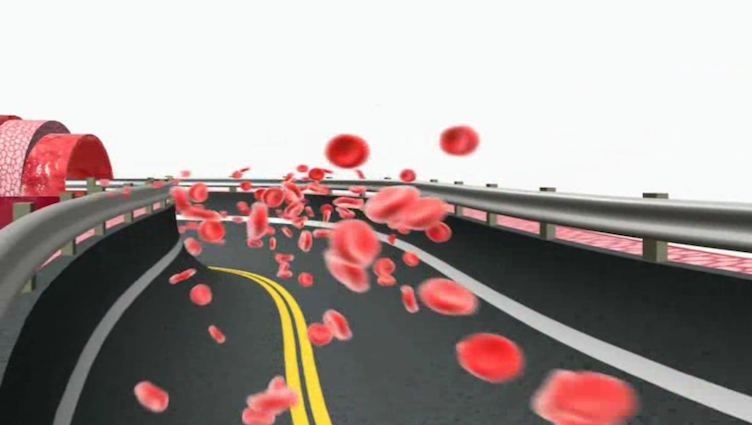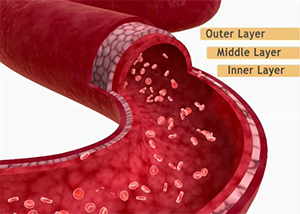
The Arterial Highway
If you think your arteries are just round tubes transferring blood, then let’s rethink a little. The structure of our artery is that of a muscular tube lined by smooth tissue and has three layers named – the Adventitia,Media and Intima. Each is designed with a specific function and has evolved to perform the main function of easing blood flow efficiently and gracefully. A recent training module from Scientific Animations describes the arteries as a highway, one that can never have a traffic jam.
Tunica Adventitia is the strong outer covering of arteries and veins. It is composed of connective tissue as well as collagen and elastic fibers. These fibers allow the arteries and veins to stretch to prevent overexpansion due to the pressure that is exerted on the walls by blood flow. Unlike a steel pipe, arteries pulsate and so must be at once flexible and rigid.
Tunica Media is the middle layer of the walls of arteries and veins - is composed of smooth muscle and elastic fibers. This layer is thicker in arteries than in veins, and importantly so, as arteries carry blood at a higher pressure than veins and have a smaller lumen (internal cross section) than veins do.

The innermost layer of arteries and veins is the Tunica Intima. In arteries, this layer is composed of an elastic membrane lining and smooth endothelium, a special type of epithelial tissue that is covered by elastic tissues. Elastic tissue present in the artery can stretch and recoil, allowing the arteries to adapt to changes in volumetric flow and blood pressure.
Every layer of the artery has developed evolutionary traits that help you arterial system to maintain flexibility, strength and promote blood flow. Diseases and conditions like high cholesterol or high blood pressure, diabetes and others prevent the arteries from doing their function well by creating blockages or increasing the stress on one or more of the layers. For example, high blood pressure causes rips in the smooth lining of the Intima. Anybody who has experienced a pipe burst in a house knows that the damage can be extreme and can never fully be restored.
Understanding the delicate functions of the arterial structure gives good incentive to treat them better. Conditions like high blood pressure, high cholesterol and lifestyle diseases such as diabetes create tears, holes, blockages and can disrupt the functions of one or more layers. Getting patients to visualize the effect of bad eating habits on their anatomy helps to increase patient compliance.
Vascular Access Animation
In medical device animations, we often think of vascular access as being a subset of cardiovascular or cardiac animations. Not so anymore, vascular access animations are used in all areas of medicine, from coronary stent implantation procedures to cosmetic surgery procedures. Read More..








